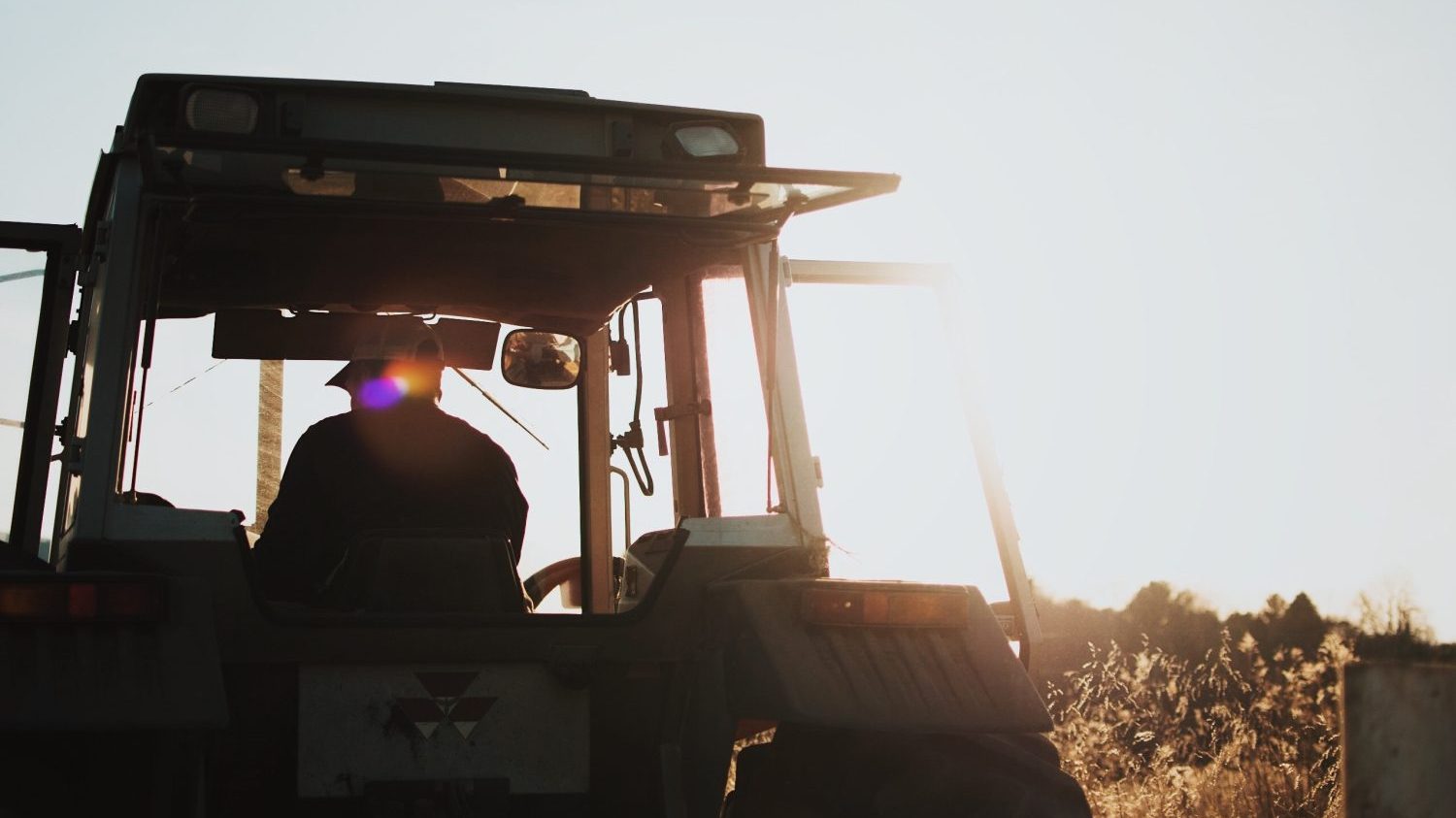AHS September Blog: When the Damage is Done

The Department of Agricultural and Human Sciences publishes a monthly blog written by students, alumni and faculty sharing important topics and helpful resources related to the fields of agricultural, extension and human science. In the September blog post, Cooperative Extension Agent Alyssa Spence, discusses safety and health issues found within the farming industry.

Robert was an agriculture teacher for over thirty years; now, he “tinkers” full-time. He works on old tractors, farm implements and other small pieces of equipment for friends and family to keep his mind sharp and his hands busy. Robert acquired this skill as an agriculture student, then brought his talent full-circle when he became an agriculture teacher. For decades, Robert has taught hundreds of students as well as his children and grandchildren about agricultural mechanics. Fixing things has been a lifelong passion for him, but that passion came with a price; his ability to hear is nearly gone.
Robert was often exposed to hazardous noises while he worked in the shop. Every time he cranked up a tractor, a chain saw or even the Shop Vac, he was exposed to harmful levels of noise, which is any sound above 85 dBs. “We just didn’t know about it back then,” recalls Robert. After working in the shop for many years without noticeable side effects, much of Robert’s hearing was lost before he even knew it was happening. For decades, his hearing was damaged little-by-little. When he finally noticed the consequences of prolonged exposure, the permanent damage was done and there was no way to reverse it; there is no cure for hearing loss (CDC).
Even though the damage is done, the desire and need to talk with others still exists. Today, Robert wears a hearing aid in both ears and has learned to read lips. He asks others to repeat themselves in conversations and sometimes he still misses out on bits of their intended message. He often depends on others’ patience, needing their help to communicate, which can be frustrating for both parties. However, Robert’s friends and family love him dearly, so they’re committed to keeping the conversation going, despite any difficulties. Unfortunately, this isn’t always the case for people suffering from hearing loss.
Frank Lin, M.D., Ph.D., a researcher from John Hopkins University, says, “a lot of people ignore hearing loss because it’s such a slow and insidious process as we age.” In recent years, Dr. Lin and his research team have been exploring links between hearing loss and unexpected side effects. “Brain scans show us that hearing loss may contribute to a faster rate of atrophy in the brain,” Lin says. “Hearing loss also contributes to social isolation. You may not want to be with people as much, and when you are you may not engage in conversation as much. These factors may contribute to dementia.” Other studies show that hearing-loss is also associated with difficulties walking, depression and even some heart conditions (CDC; John Hopkins). Looking at this laundry list of potential negative side effects, the logical conclusion would be striving to protect one’s hearing. And given his experiences, Robert would agree.
Robert’s ability to hear may be nearly lost, but his hindsight is 20/20. Like many people living with irreversible hearing loss, Robert now knows that protecting your hearing is most effective when using preventative measures such as avoiding harmful noises, or using hearing protection when avoidance isn’t an option. Because Robert knows this, his grandson knows the importance of hearing protection too.
When his grandson, Ray Scott, followed in his footsteps and also became a shop teacher, Robert hoped to use his influence to positively impact his grandson’s hearing health. When Ray Scott entered the classroom, Robert emphasized the need of a quality hearing protection device, or an HPD. He wanted to make sure that Ray Scott could hear his grandchildren’s laughter, which is something Robert can’t do today.
Ray wears an HPD every time he works in the shop, runs a lawnmower, or works around any hazardous noise above 85 dBs (CDC). Ray considered several factors when choosing the “right” HPD for him. As recommended, he considered cost, comfort, length of use, and the amount of noise reduction needed (GPCASH). Ray chose earmuffs with the appropriate noise reduction rating (NRR) that he could reuse and replace easily when they wore out. Since he planned to wear them for several hours a day, he splurged on an “upgrade” that enhanced his HPD by integrating Bluetooth technology into the earpiece. This feature transforms typical noise-canceling earmuffs into a device that emits audio through a small speaker in the earpiece. Many Bluetooth-enabled HPDs also have a small microphone embedded in the headpiece. This technology allows Ray Scott to answer phone calls, listen to music, and use voice commands to control his connected smart device. Is it possible that his HPD may actually be causing harm?
Depending on how Ray Scott uses his bluetooth-enabled HPD, this upgrade in technology could be a downgrade in hearing protection. In this scenario, Ray Scott’s HPD is very similar to the bluetooth-enabled headphones created by Apple called, “Air Pods.” or “earbuds” as they’re commonly referred to generically. These headphones come in the form of two, small, wireless speakers that fit directly into the wearer’s ear. Unfortunately, the use of headphones such as these may be linked to hearing-loss as these devices are equipped to exceed safe noise levels. Most headphones can reach a maximum volume of 110 dB (Brinson, 2016), which is equivalent to the noise level of a leaf blower. Exposure to this volume can damage hearing in as little as 2 minutes (GPCASH). One study found that as much as 50% of young adults (ages 12-35) may be exposed to unsafe levels of sounds from personal listening devices alone (WHO, 2015).
Apple Support has a page to help users determine if they are listening at unsafe volumes. Many devices also have tools built into their software to help users monitor their exposure to harmful noise volumes. The creation of these resources suggests that health experts and manufacturers alike acknowledge the potential risks associated with these products. Let’s talk about some simple ways everyone can protect their hearing:
Hearing Protection Tips
- Turn the volume down. Whether it’s listening to music with your earbuds, enjoying a podcast in the car, or simply watching TV, be mindful of volume levels and use the lowest volume that allows you to listen comfortably.
- Use an HPD. Hearing Protection Devices such as earplugs and earmuffs are important to wear anytime we’re exposed to excessive noise. Most often we associate harmful noise with work such as mowing, working in a shop, operating a tractor, etc. But concerts, sporting events, and other events can also be too loud.
- Limit exposure time. Perhaps you’re not willing to wear earplugs to that concert at Walnut Creek or to Carter Finley to see the Pack play, but you could limit how long you’re exposed to the loud noises you find there. And remember, the louder a noise, the less time it takes to damage your hearing. Sounds will start causing hearing loss if they are ~85 dBA and last a few hours; ~100 dBA and last at least 14 minutes; or ~110 dBA and last as little as 2 minutes.
- Move away from the noise. Noise travels through the air in waves. The farther you are from the source, the smaller those waves become, and the quieter they are as a result. This translates to moving away from the sources of harmful noises such as the speakers at an outdoor event or even a loud shop fan.
- Know your noise level. We live in a noisy world, so when you’re not sure if what you’re hearing qualifies as a harmful noise, use a sound meter to determine volume. Sound meters can be downloaded for both Apple and Android devices. These tools may not be exactly accurate, but at least they give you an idea of how loud your surroundings are.

Hearing protection is a major concern in the US and across the globe. By the year 2050, the World Health Organization expects that 25% of the global population will experience problems with their hearing (WHO, 2021). Today, WHO data estimates that over one-billion young adults are at risk of permanent, avoidable hearing loss due to unsafe listening practices (2021). Whether you’re at school, home, or work, be sure to listen to Robert’s advice and protect your hearing before it’s gone.
While anyone can suffer from hearing loss, it’s a major concern in the occupation of farming and other agricultural careers (CDC, 2021). In honor of Farm Safety Week (September 18-24, 2022), I challenge all of us in CALS to take a step toward better hearing health by practicing at least one of the hearing protection tips in this article. For more information about hearing protection safety or farm safety week, visit www.go.ncsu.edu/farmsafety or reach out to Farm Safety and Health specialist Alyssa Spence at alyssa_spence@ncsu.edu.

- Categories: